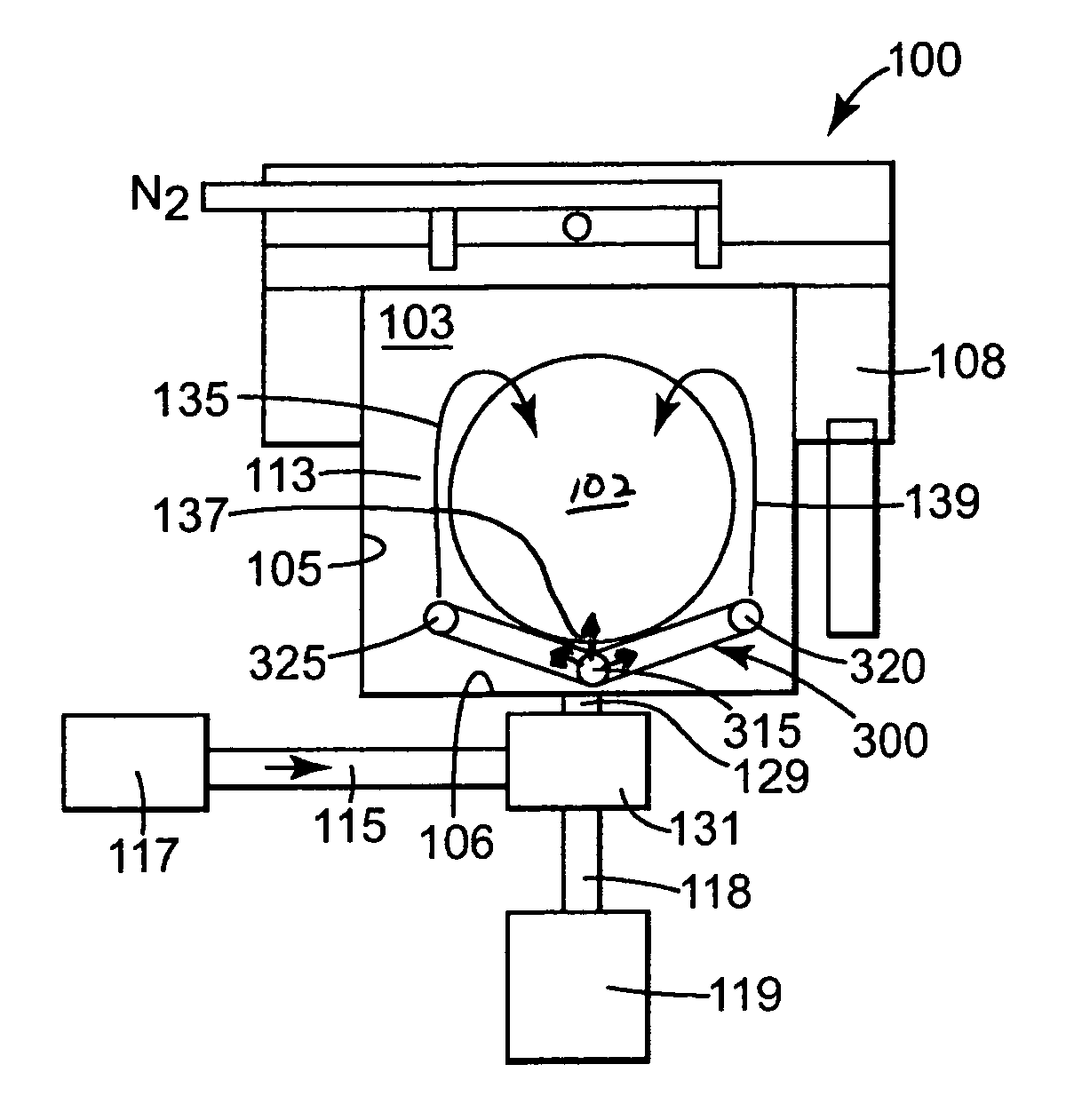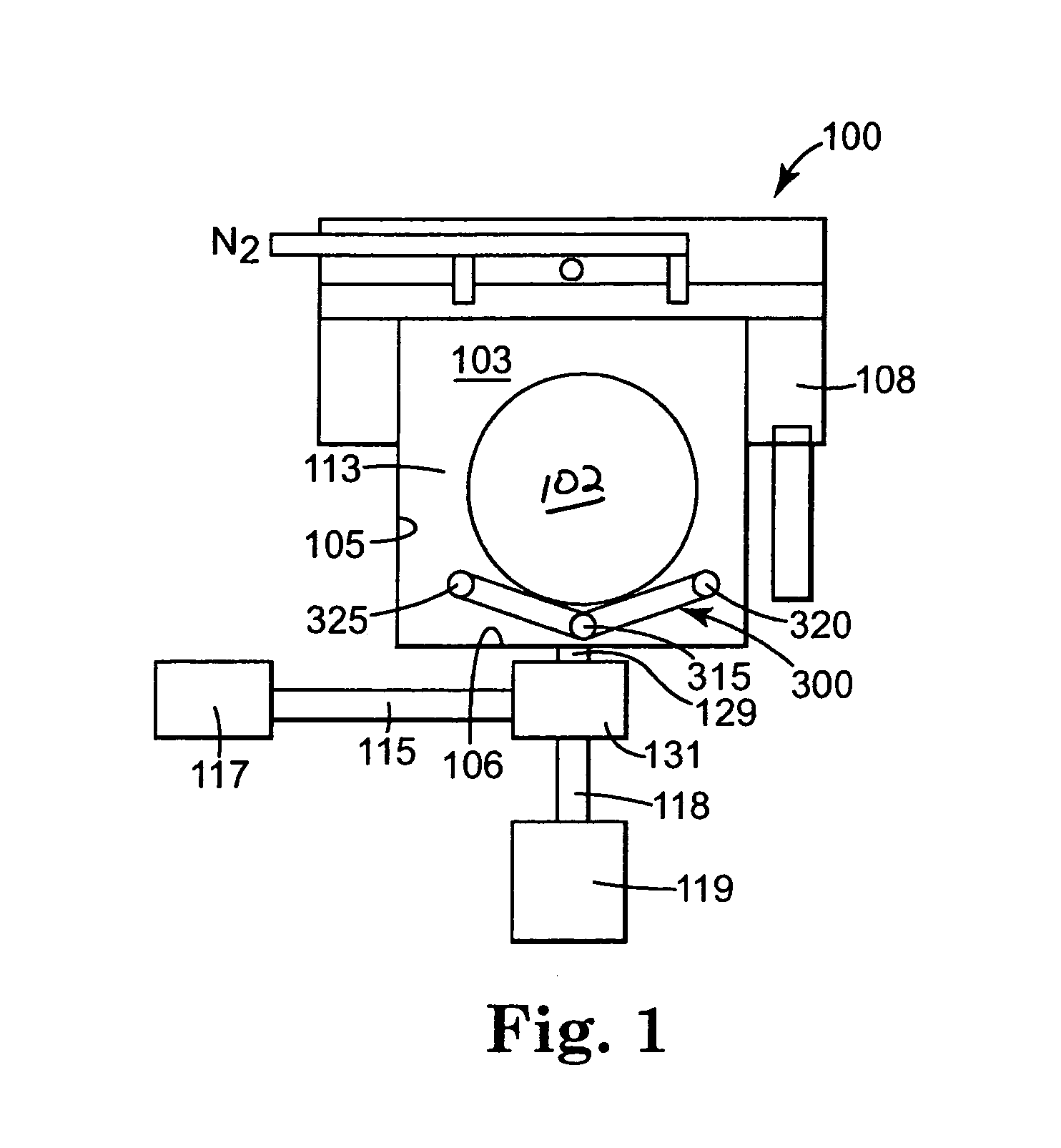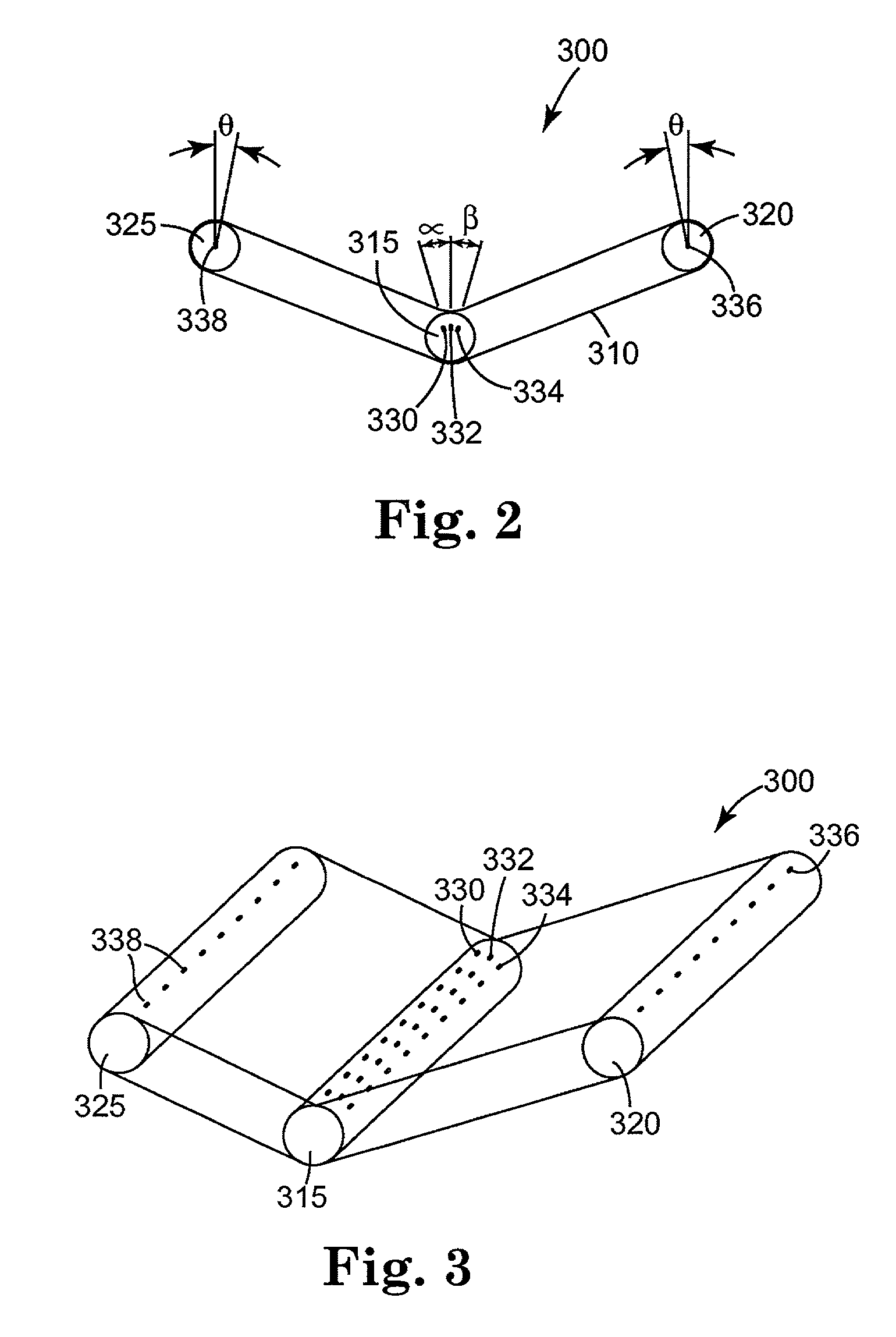Transition flow treatment process and apparatus
- Summary
- Abstract
- Description
- Claims
- Application Information
AI Technical Summary
Benefits of technology
Problems solved by technology
Method used
Image
Examples
example 1
Measuring the Uniformity of Chemical Concentration
[0073]For purposes of the present invention, the process of the present invention is carried out such that a uniform increase or decrease of concentration of the treating chemical is observed during each transition in bath content. This evaluation is preferably carried out proximally to the surface of the object to be treated. A solution is considered to be uniform in concentration if, at any given time in the process, the concentration of the treating chemical varies by no more than about 50%, and preferably no more than about 20% near the surface of the object to be treated. Areas of the bath far from the treated surfaces are not of interest and are not to be included in concentration measurements.
[0074]The concentration near the surface of an object to be treated can be determined by any appropriate technique, such as by measuring the conductivity of the liquid at representative locations in the liquid to be evaluated. In this ran...
example 2
Measuring the Uniformity of the Etch
[0077]In the case of etching, the amount of material removed by an etching process is measured at several points on the surface of the wafer. At least 9 to 121 sites are typical, with 49 or so measurements being preferred.
[0078]In the case of measuring the uniformity of the SiO2 etching process at 49 sites evenly distributed on a 300 mm diameter silicon wafer used in the production of semiconductor devices, the following procedure can be used. The initial thickness of the SiO2 is measured at each point on a Rudolph Caliber 300 ellipsometer, commercially available from Rudolph Research, or the equivalent, and the measured values stored in its on-board computer (the “pre” measurement). The wafer is then processed with a treating chemical (typically dilute HF) to etch away some of the SiO2, rinsed and dried. The thickness of SiO2 at the same 49 points on the wafer is then re-measured on the ellipsometer (the “post” measurement). The location of the 4...
example 3
Measuring of the Uniformity of a Transition Etch Compared to that of a Soak-Etch and an Etch in a Separate, Recirculated HF Bath
[0088]FIG. 14 shows the etch uniformity results of wafers processed in three ways:[0089]Comparison 3A: wafers etched by immersion in a separate, dedicated, recirculated bath of HF and transferred to a bath of flowing water for rinsing (dedicated-bath etch);[0090]Comparison 3B: wafers etched by immersion into a pre-mixed bath of HF and soaking, followed by an in-situ rinse in the same tank (soak etch); and[0091]Comparison 3C: wafers etched by immersion into flowing DI water followed by a transition-in to flowing HF followed by a transition-out to flowing DI water (Transition Etch of the present invention)
[0092]The wafers for the dedicated-bath treatment were immersed for 140 seconds in a 40 liter bath of 200:1 HF being recirculated at 40 lpm. The wafers were then robotically transferred to a 40 l rinse bath in an etch / rinse / dry tank which overflowed DI water...
PUM
| Property | Measurement | Unit |
|---|---|---|
| Fraction | aaaaa | aaaaa |
| Fraction | aaaaa | aaaaa |
| Length | aaaaa | aaaaa |
Abstract
Description
Claims
Application Information
 Login to View More
Login to View More - R&D
- Intellectual Property
- Life Sciences
- Materials
- Tech Scout
- Unparalleled Data Quality
- Higher Quality Content
- 60% Fewer Hallucinations
Browse by: Latest US Patents, China's latest patents, Technical Efficacy Thesaurus, Application Domain, Technology Topic, Popular Technical Reports.
© 2025 PatSnap. All rights reserved.Legal|Privacy policy|Modern Slavery Act Transparency Statement|Sitemap|About US| Contact US: help@patsnap.com



